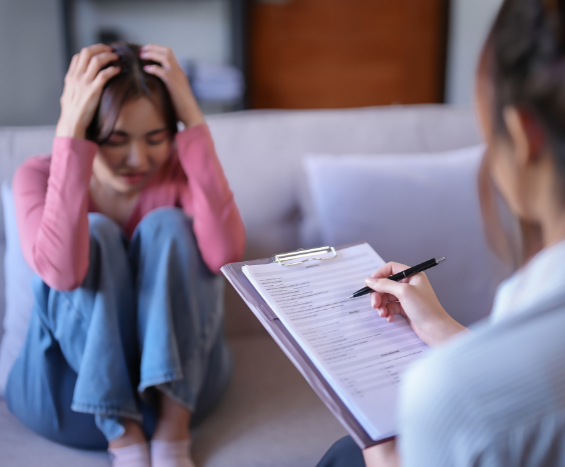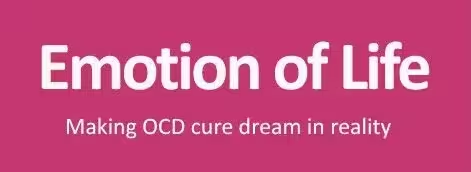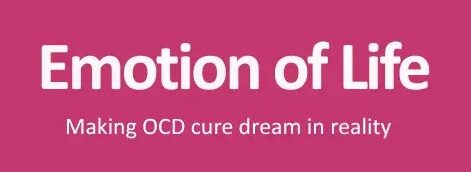How to Do CBT at Home for OCD

India's Best OCD Treatment
How to Do CBT at Home – A Practical Guide by Emotion of Life
Cognitive Behavioural Therapy (CBT) is one of the most effective treatments for Obsessive-Compulsive Disorder (OCD). It helps individuals understand and change the negative thought patterns and behaviours that fuel OCD. While working with a professional therapist is ideal, you can also begin practicing CBT techniques at home with guidance and commitment. At Emotion of Life, we support individuals across India with structured OCD recovery programs based on CBT and ERP, even from the comfort of their homes.
Here are simple steps to start CBT at home for OCD: Simple, evidence-based steps to begin changing your relationship with intrusive thoughts and compulsions
Consistency plus guided support creates steady progress.
1) Identify Your Obsessions and Compulsions
Write down your common intrusive thoughts (obsessions) and the behaviors (compulsions) you use to reduce anxiety. For example:
- Obsession: “My hands are contaminated.”
- Compulsion: “I wash my hands repeatedly.”
2) Track Your Triggers
Note situations, places, or times that trigger OCD. This builds awareness and helps you plan exposure exercises later.
3) Challenge Your OCD Thoughts
Ask yourself:
- Is this thought 100% true?
- What evidence do I have for and against it?
- What would I say to a friend who had this thought?
4) Practice Exposure and Response Prevention (ERP)
Gently face a feared cue without doing the compulsion. Example: touch a doorknob and delay handwashing. With repetition, anxiety reduces and confidence grows.
5) Be Consistent and Track Progress
Use a diary or app to record exposures, thoughts, and anxiety levels. Small daily steps add up over time.
❓ FAQ: How to Do CBT for OCD at Home
Q1. Can I really do CBT for OCD at home?
Yes. You can practice basic CBT skills like identifying negative thoughts, writing thought records, and practicing exposure exercises. However, for severe OCD, working with a therapist is strongly recommended.
Q2. What is the first step of CBT at home for OCD?
Start by keeping a thought diary. Write down the intrusive thought, how it makes you feel, and what compulsion you usually do. This helps you see the OCD cycle clearly.
Q3. How can I practice Exposure and Response Prevention (ERP) at home?
Make a small list of triggers (from least to most difficult). Face a mild trigger without performing your usual compulsion. Over time, increase the difficulty. This reduces OCD anxiety gradually.
Q4. How much time should I spend on CBT exercises daily?
Even 15–30 minutes daily is effective if you’re consistent. The key is repetition and practice.
Q5. Do I need medication if I do CBT at home?
Many people recover from OCD without medication, especially with structured CBT and ERP. However, consult a mental health professional if symptoms are severe.
Q6. Can I cure OCD with CBT at home?
CBT, especially ERP, is the gold-standard treatment for OCD. While you can make strong progress at home, professional guidance makes recovery faster and safer.
Q7. What tools can help me do CBT at home?
- CBT thought diary or journal
- Mobile apps like CBT Thought Diary or Woebot
- Self-help books (Overcoming Unwanted Intrusive Thoughts, Freedom from OCD)
Q8. How long does it take to see results?
With daily practice, some people notice changes within 4–6 weeks, but full recovery takes longer and requires persistence.
Q9. What mistakes should I avoid while doing CBT at home?
- Forcing “positive thinking” instead of realistic thinking
- Skipping exposures or giving in to compulsions halfway
- Trying to tackle the hardest fears too quickly
Q10. When should I seek professional help?
If OCD severely impacts your daily life, relationships, or work—or if you feel stuck despite trying CBT at home—it’s best to work with a qualified OCD therapist.
Conclusion:
Doing CBT at home can be a powerful step toward managing OCD, reducing anxiety, and regaining control over your thoughts and actions. By consistently practicing thought records, challenging negative thinking, and gradually facing your fears through exposure, you can break the cycle of compulsions and intrusive thoughts.
While home-based CBT can bring significant improvement, the guidance of a trained therapist ensures you stay on track, avoid common mistakes, and achieve faster, more lasting recovery. Remember, OCD recovery is a journey—small, consistent steps lead to meaningful change. With patience, persistence, and the right approach, you can reclaim your life from OCD.
Get Guided Help
At Emotion of Life, we offer expert-guided online CBT and ERP sessions for OCD recovery. You do not have to do it alone.
Website: www.emotionoflife.in
Call: +91 93685 03416
Email: info@emotionoflife.in
Book Now | Review | OCD Types | Meet Our Experts | Success Stories | Contact Us | MyPsychologist
“Emotion of Life” — take the first step toward an OCD-free life, naturally and effectively.
CBT & ERP: 5 Starter Steps for OCD Self-Work
Simple, evidence-based steps to begin changing your OCD
Consistency plus guided support creates steady progress.
1) Identify Your Obsessions and Compulsions
Write down your common intrusive thoughts (obsessions) and the behaviors (compulsions) you use to reduce anxiety. For example:
- Obsession: “My hands are contaminated.”
- Compulsion: “I wash my hands repeatedly.”
2) Track Your Triggers
Note situations, places, or times that trigger OCD. This builds awareness and helps you plan exposure exercises later.
3) Challenge Your OCD Thoughts
Ask yourself:
- Is this thought 100% true?
- What evidence do I have for and against it?
- What would I say to a friend who had this thought?
4) Practice Exposure and Response Prevention (ERP)
Gently face a feared cue without doing the compulsion. Example: touch a doorknob and delay handwashing. With repetition, anxiety reduces and confidence grows.
5) Be Consistent and Track Progress
Use a diary or app to record exposures, thoughts, and anxiety levels. Small daily steps add up over time.
Get Guided Help
At Emotion of Life, we offer expert-guided online CBT and ERP sessions for OCD recovery. You do not have to do it alone.
Website: www.emotionoflife.in
Call: +91 93685 03416
Email: info@emotionoflife.in
Book Now | Review | OCD Types | Meet Our Experts | Success Stories | Contact Us | MyPsychologist
© “Emotion of Life” — take the first step toward an OCD-free life, naturally and effectively.
FREQUENTLY ASK QUESTIONS
Can I do CBT for OCD at home with guidance from Emotion of Life?
Yes, Emotion of Life provides structured CBT guidance that you can practice at home. With professional support, you can learn techniques like Exposure and Response Prevention (ERP) and cognitive restructuring to manage OCD symptoms effectively.
What are the basic steps to start CBT for OCD at home recommended by Emotion of Life?
At Emotion of Life, we recommend starting with identifying your OCD triggers, creating a hierarchy of fears, and gradually facing them using ERP exercises. Consistent practice and tracking progress are key to successful home-based CBT.
How does Emotion of Life support clients doing CBT at home?
Emotion of Life offers regular online or teletherapy sessions, homework assignments, and follow-up support to guide you through CBT exercises at home, ensuring you stay motivated and on track.
Is CBT at home effective for severe OCD cases according to Emotion of Life?
While CBT at home can be very helpful, Emotion of Life advises that severe OCD cases may require a combination of in-person or online therapy sessions along with home practice for best results.Most clients at Emotion of Life begin to notice significant improvement within 8 to 12 weeks of consistent therapy, though the full course of treatment typically lasts 12 to 24 weeks depending on individual needs.
How long should I practice CBT exercises at home each day according to Emotion of Life?
Emotion of Life suggests dedicating 20 to 40 minutes daily for CBT exercises at home, including ERP tasks and cognitive work, to build resilience and gradually reduce OCD symptoms.While CBT at home can be very helpful, Emotion of Life advises that severe OCD cases may require a combination of in-person or online therapy sessions along with home practice for best results.Most clients at Emotion of Life begin to notice significant improvement within 8 to 12 weeks of consistent therapy, though the full course of treatment typically lasts 12 to 24 weeks depending on individual needs.


